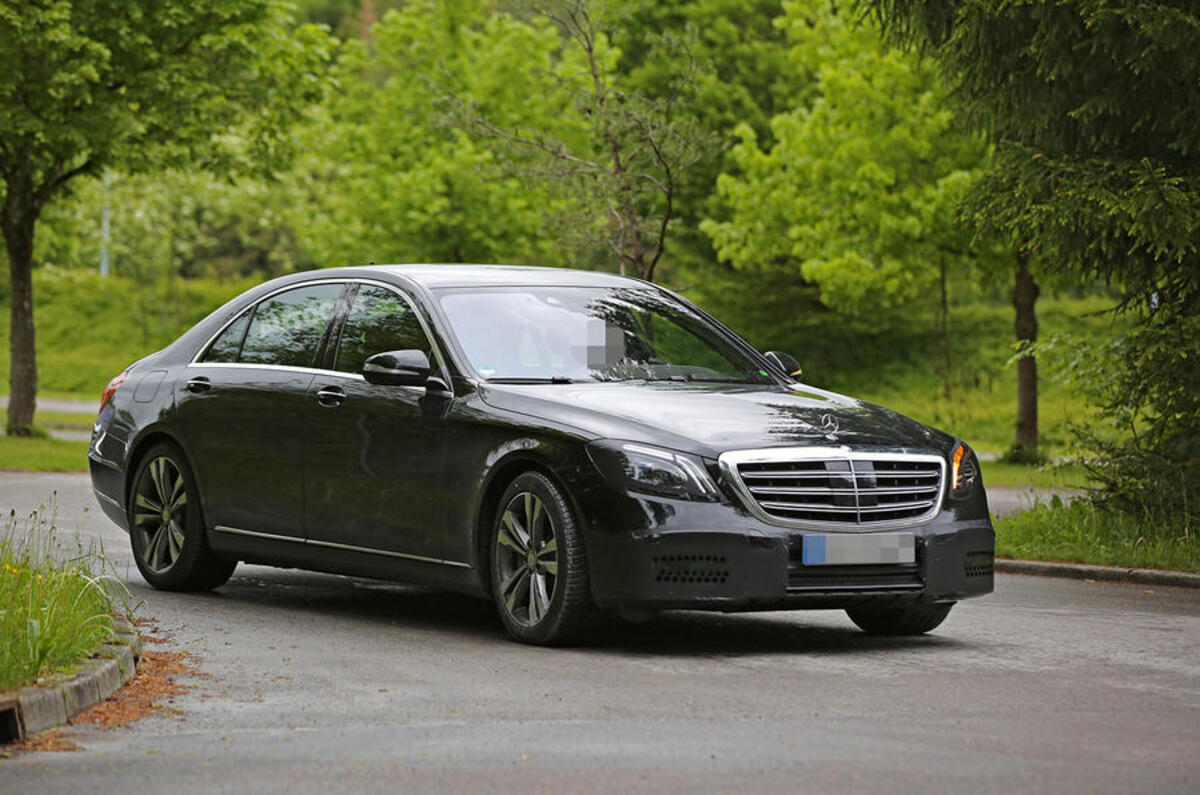The 2017 Mercedes-Benz S-Class 500 e will be made available with induction charging, enabling it to top up its electricity reserves without the need for plugs.
The technology used to charge the facelifted plug-in hybrid's battery is similar to that used for wirelessly charging smartphones.
The induction charging system being developed consists of two coils, one in the car’s floor and one contained within a base plate over which the the car would sit in order to charge. The base plate would sit on the floor under a protected area, most likely in a garage. An electromagnetic field is formed between the two coils, facilitating the transfer of electrical energy.
An in-car message will display once the vehicle is within range of the base plate, following which the charging process will commence automatically. The wireless energy transmission happens at a power output of 3.6kWh.
Mercedes says the system is 90% efficient, so charge times compared with a conventional plug are only slightly increased.
The 2017 500 e, an updated version of the current 500 plug-in hybrid, will use a turbocharged petrol engine and electric motor. Like today's model, it will be able to run on electric power alone for around 20 miles.
Insiders believe autonomous driving could be integrated with the car’s charging procedure, so the 500 e could eventually be able to drive itself over a charging point in order to top up power.
Initially the induction charging technology will be available as an optional extra when the facelifted S-Class (pictured above in test mule form) arrives next year, but Mercedes expects to add induction charging to all of its electrified range in the coming years.
Mercedes and fellow German car makers BMW and Volkswagen have recently made movements to speed up the introduction of more electrified cars to their ranges. This pace looks set to increase as the German government has now revealed plans to ban the sale of polluting combustion-engined cars by the end of the next decade.
Lee Stern
Read more: Wireless electric car charging system revealed in the US





Join the debate
Add your comment
How lazy are some people?
Difference
Induction charging
Current petrol and diesel cars take about 3 minutes to refill from coming to a halt at the pump, filling, paying then driving off. How many thousands of the current pumps are there in the UK and how many electric chargers would we need with electric cars needing filling far more often and for at least 30 minutes or several hours in most cases? How will infrastructure cope with hundreds of cars requiring simultaneous charging at motorway services/shopping centres/large office buildings?
There does not seem to be any thought being put into how the proposed huge growth in electric cars will be coped with regards their limited range and charging time. Not all motorists drive short journeys in large cities, how would motorists manage on their holidays in rural areas where bigger mileages and few if any chargers are available.
The customer?
Ultimately, the customer pays, or in some cases, the tax-payer might contribute. I've not heard of concerns being raised over who pays when a supermarket puts in a new petrol filling station. Why need it be any different for them for electric charging? Never know, points might buy KWh. Ultimately it has to be factored into their overall pricing strategy. Perhaps supermarkets will offer packages to include your home electricity and gas, and charging at their outlets.
Convenience